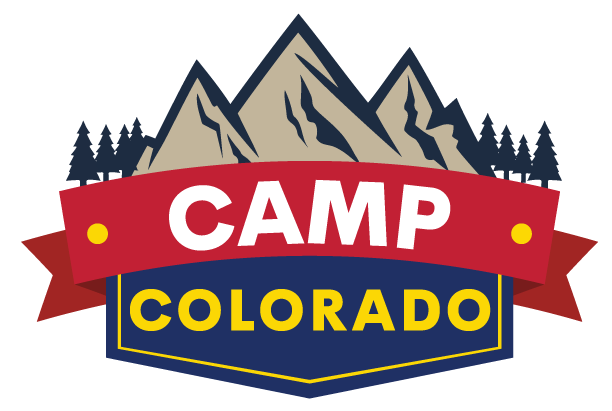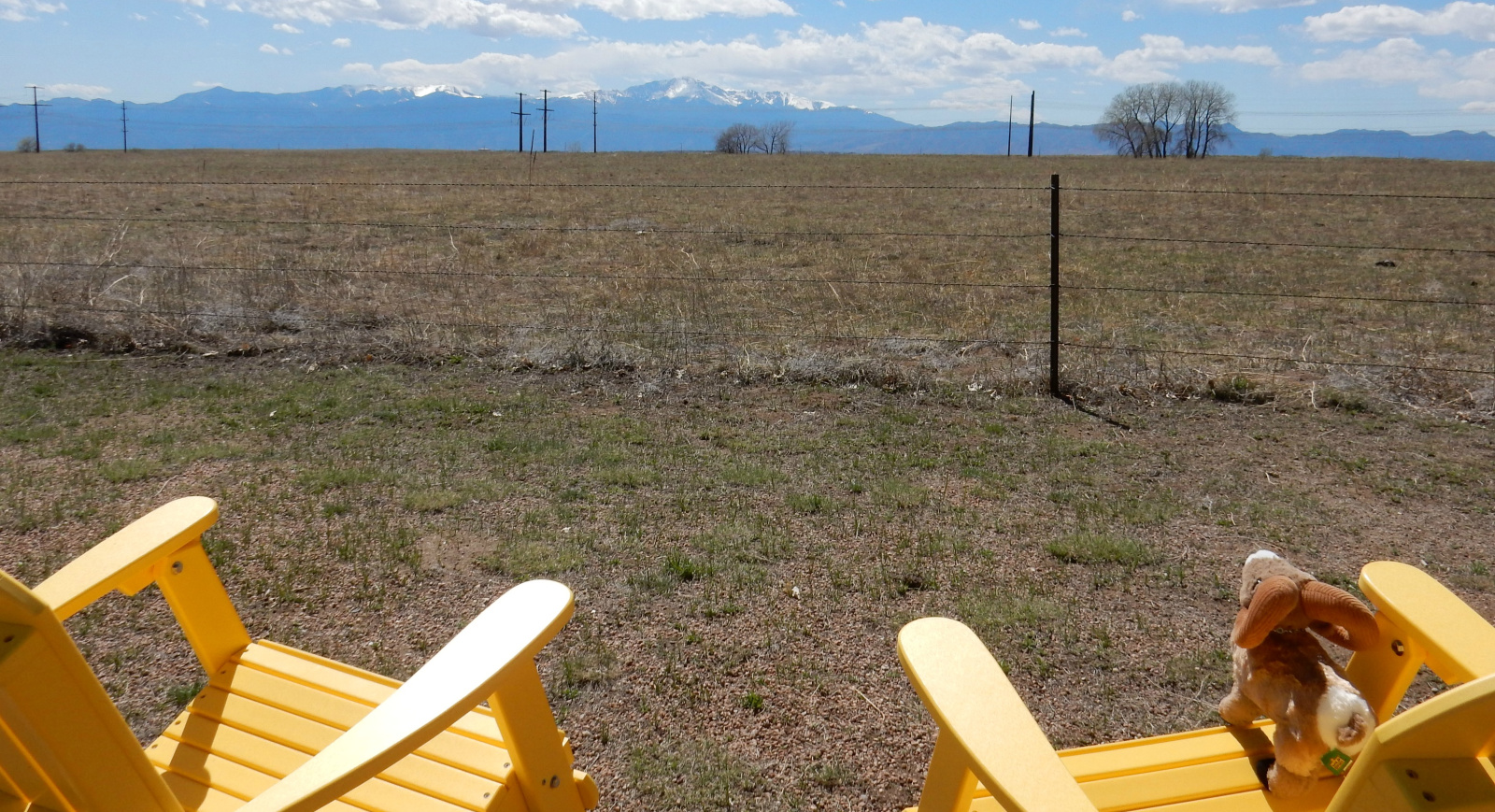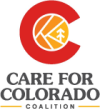In an earlier blog post, we introduced the eight regions of Colorado. Now let’s dive more deeply into each region (when we’re finished with each we’ll link them to one another).
This time we’ll visit the area known as the Pikes Peak Wonders region (shown in orange in the center portion on the map).
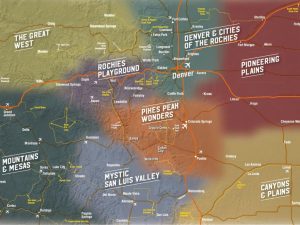
8 Tourism regions of Colorado (as shown by the Colorado Tourism Office)
Recognizing that there’s only a figurative border between each region, Pikes Peak Wonders blends into nearly every other region! The only one it doesn’t touch is the The Great West region.
While all of the communities have character, perhaps the most recognized ones are Colorado Springs, Cañon City, Buena Vista, Cripple Creek, Manitou Springs, Monument, Rye, and Woodland Park.
Those with military ties are perhaps most familiar with the United States Air Force Academy, Fort Carson, Peterson Air Force Base, and Cheyenne Mountain
PEAKS
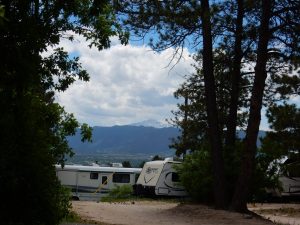
Pikes Peak as seen from Colorado Heights Camping Resort
Prepare your eyes for these majesties and get your camera ready for some wonderful photo ops!
Obviously, with a name like Pikes Peak Wonders region, this is home to Pikes Peak, a mountain that rises to 14,115′ above sea level. Pikes Peak Region Attractions says it so well with this phrase:
14,115 FEET ABOVE ORDINARY
Pikes Peak – America’s Mountain attracts more than 500,000 visitors every year, making it the most visited peak in North America.
If you think that’s impressive, wait until you see the view.
FOURTEENERS
It doesn’t end there! Oh, not at all. You’re just beginning to experience the Rockies when you reach Pikes Peak! Keep going! Soon you’ll find the Collegiate Peaks in the area of Buena Vista! These peaks include some of the Rockies highest mountains, and some are named after prominent colleges:
- Mount Harvard at 14,421′
- Mount Princeton at 14,204′
- Mount Yale at 14,202′
- Mount Oxford at 14,160′
- Mount Columbia at 14,079′
A popular term in Colorado is “fourteeners” or “14ers.” This refers to the peaks that rise to 14,000′ or greater in elevation. You’ll notice all on that list are 14ers. There are more, and you can find read about them by clicking here.
Considering the fact that Denver’s elevation is 5,280 feet above sea level (thus the “Mile High City” as we explained in the Denver & Cities of the Rockies Region post), and Colorado Springs is 6,035 feet in elevation, heading west into the Rockies means climbing up to where the air is thinner!
Elevation can play tricks on the body, but it’s so easy to overcome this. To make sure your vacation doesn’t get marred by altitude sickness, please drink lots of water, avoid alcohol on your arrival day, and give your body at least a day or two to adapt before putting it through any strenuous workouts.
SCENIC DRIVES
In this region, scenic drives are essentially everywhere there’s a road! Still, the actual Scenic Byways in this region are the:
- Collegiate Peaks Scenic Byway (with the largest concentration of 14ers)
- Frontier Pathways National Scenic Byway
- Gold Belt Tour National Scenic Byway
- Pikes Peak Highway
TREASURES
- Browns Canyon National Monument: As their website says, “The area is unique, towering over the Arkansas River, itself a beacon to white water rafters and anglers. The granite walls of the canyon stand like a series of a natural cathedral spires that change hues as the light of day wanes.”
- Florissant Fossil Beds National Monument: YES! Fossil beds! As the NPS website says, “Beneath a grassy mountain valley in central Colorado lies one of the richest and most diverse fossil deposits in the world. Petrified redwood stumps up to 14 feet wide and thousands of detailed fossils of insects and plants reveal the story of a very different, prehistoric Colorado.”
- South Park National Heritage Area This is a high elevation mountain valley, and as their website says, “South Park is remarkable not only for its wealth of natural and cultural resources, but as a place that continues to embody the soul of the Western frontier.
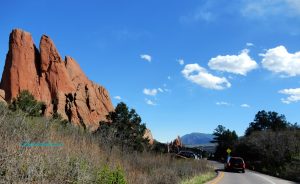
Garden of the Gods
- Garden of the Gods (A-MAZ-ING!)
- Royal Gorge Bridge & Park (Incredible!)
- Royal Gorge Route Railroad (Fun for all ages!) (OK, now we’ll let you figure out your own descriptions!)
- Skyline Drive
- Cripple Creek & Victor Narrow Gauge Railroad
- Cripple Creek casinos
- Bishop Castle
- Dark Skies of the Wet Mountain Valley
- United States Air Force Academy
- Cheyenne Mountain Zoo
WILDLIFE & FISHING
The most common wildlife sightings are of deer, elk, black bears, mountain lions, bighorn sheep, pronghorn, turkey, bison, and mountain goat.
Fishing is incredible, and the likely catch are pike, yellow perch, tiger muskie, cutthroat, brook, brown, and rainbow trout.
OUTDOOR SPORTS
We couldn’t begin to list every sport! This region is alive with outdoors adventure, every season of the year!
Perhaps one of the lesser known sports-oriented attractions is the Olympic Training Center for Team USA. We encourage you to check it out!
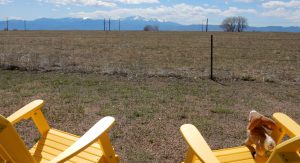
Pikes Peak from Falcon Meadow Campground
HISTORIC DISTRICTS
- Cañon City Downtown Historic District
- Cripple Creek Historic District
- Old Colorado City National Historic District
- Salida Downtown Historic District
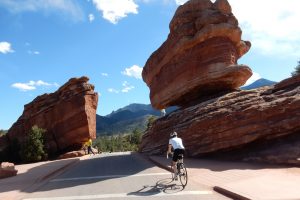
Garden of the Gods
WORDS OF WISDOM
- Altitude sickness is REAL and it’s PREVENTABLE! Before you book your campsite, please consider our suggestions (click here). Let your body adapt! Even one day can make the difference in the quality of your Colorado vacation.
- Prepare for being closer to the sun. It might not sound like a big deal, but sunburn and dry, itchy skin are preventable! Again, please consider our suggestions (click here).
- When you’re in the area eastern side of this region, you’ll likely hear the phrases Front Range and the I-25 corridor. The Front Range refers to the western boundary of the corridor which serves as a gateway to the Rocky Mountains. The I-25 corridor is more obvious when you realize that I-25 runs north and south from the New Mexico border to the Wyoming border, through Pueblo, Colorado Springs, Denver and Fort Collins. You’ll often hear these phrases when locals are talking about weather or traffic conditions.
- If you click on each link provided in this blog post, you will find much more historical and entertaining information!
- Those who book early have the best chance of finding campsite availability, especially for summer weekends and holidays.
- There are limited roadways compared to the eastern USA, so plan for this. Congestion can be an issue (especially Friday and Sunday evenings).
- Regardless of the time of day and time of year, be sure to monitor conditions on COtrip for the current road conditions. Construction, avalanche control, snow, ice, rain … Colorado can see all of it even in one day!
CAMPING
Where should you camp in colorful Colorado? It depends on the month of your trip and your camping preferences from what amenities you desire to your means of lodging (tent, RV, cabin, yurt, lodge, tepee, covered wagon, glamping safari tent, or any other means of enjoying the outdoors). Since there are many other factors to consider, we created our CampColorado to help you find a campground that suits your desires. The search page offers a range of options, and many listings provide in-depth descriptions.
The Colorado Tourism Office provides additional travel ideas in the regions in this post.
This publication is supported by funding from the Colorado Tourism Office, a state agency. Turn to Colorado.com for a comprehensive list of festivals, events, historic areas, itineraries, and community insight.
